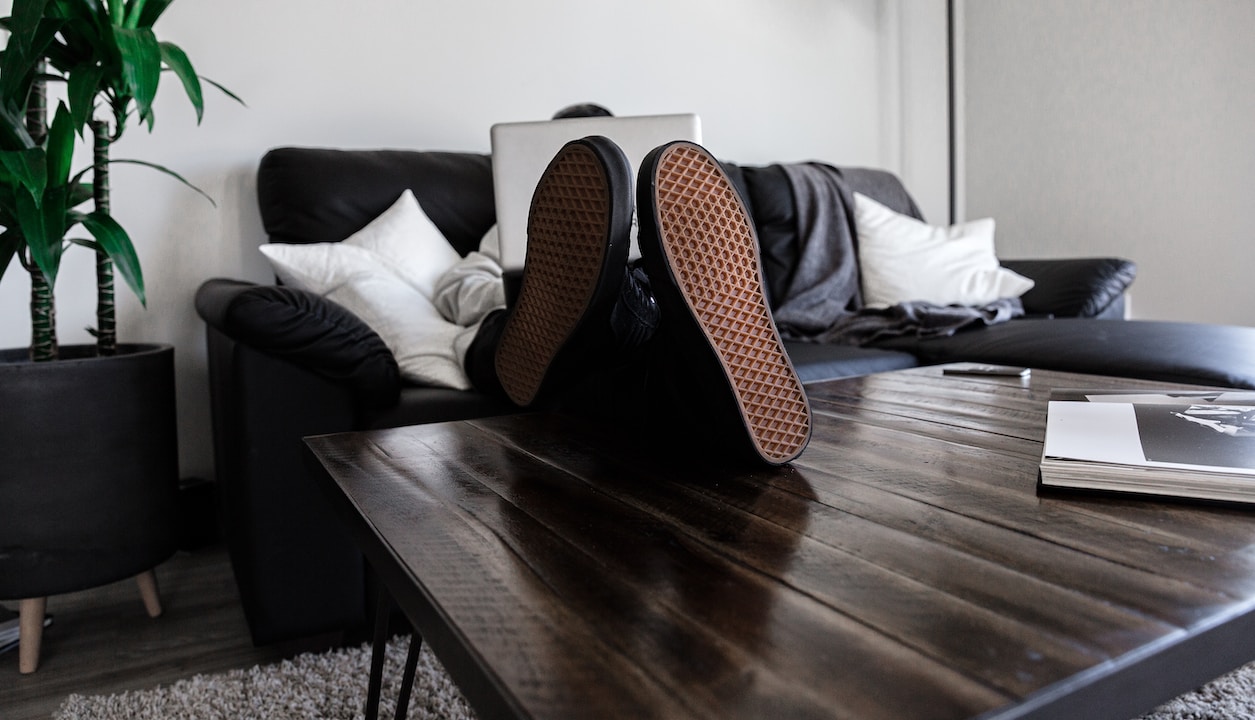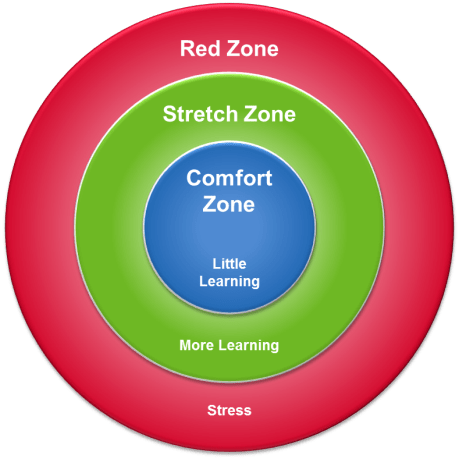
You have probably heard about the circle of comfort many times, which you might know better as the Comfort Zone. Almost everyone advises others to stay out of this circle. But what is the importance of leaving this circle? Is getting out of it always the best possible strategy? The picture below explains the story to some extent.
To better understand the issue, one must first understand the concept of the comfort zone. One of the most telling scientific definitions of this phenomenon is related to people’s anxiety levels. Being in the circle of comfort includes any behavior that keeps a person’s anxiety level at its lowest. Anything can be included in this concept, from cooking and washing dishes to business communication or watching TV. Any activity that minimizes a person’s anxiety level by doing it and the person is inclined or used to that activity is within his comfort zone.
Most people try to escape it by doing things outside of this circle. Anything that can slightly increase anxiety is considered outside the boundaries of a person’s comfort zone. For example, if going to work and being exposed to the traffic and crowding of the subway increases your anxiety and reduces your sense of comfort, this activity is considered outside the scope of your comfort circle.
Of course, while anxiety is not something anyone wants to acquire, a small amount is surprisingly effective and helpful. Many times we need a little anxiety to motivate ourselves to do something. Thus, our efficiency improves. In a study conducted on rats in 1908, it was found that by assigning a very, very simple task, efficiency increased, and subsequently, the level of anxiety also increased somewhat. Making the tasks more difficult has shown a relative increase in anxiety and thus improved performance, and finally, by assigning very complex tasks, the level of anxiety increases to such an extent that efficiency reaches zero.

The comfort circle is usually depicted as here. The circle of learning surrounds the circle of comfort, and the circle of fear surrounds the circle of learning. When the level of anxiety reaches the ultimate limit, with the help of the image here, you can better understand the example of the experiment on mice. When it is an effortless task, the rats in their comfort circle do it quickly without feeling particularly anxious. By increasing the level of anxiety, the mice entered the learning circle and showed even better performance. But when a difficult task is assigned to them, with a slight increase in their level of anxiety, they have entered the circle of fear, and their efficiency level has reached a minimum or even zero.
What to do with doubts?
Much of our anxiety comes from doubting the simplicity or complexity of what we have to do. Things that take us out of our comfort zone. This is because routine and simple tasks such as watching a series, cooking, or washing dishes are not considered essential and complicated issues for us. Because we are well acquainted with each of them. But the result of thinking about doing things like driving for the first time, skydiving, or any new thing that we have doubts about doing, is an increase in anxiety.
The result of doubting anything is the appearance of negative feelings and experiences. The result of a study in this regard showed that when the participants in the experiment were faced with new situations that they had doubts about, pessimism and anxiety increased in them. On the contrary, the conditions in which they were aware of the result showed a lower amount of negative symptoms in them. We generally react negatively to new situations or things. Brené Brown, the researcher, says that new social, political, or economic conditions always make us doubt and make our circle of comfort smaller. And the higher our doubt and fear of being in new situations, the more complex and complicated it will be to get out of our comfort zone.
Familiarity with new situations and things make us feel comfortable and even enjoyable. But initial guarding in dealing with such cases is familiar. Looking from the point of view of the evolution process, we feel more secure in front of the conditions we are familiar with, and our positive and negative behaviors in different cases are due to this instinctive feeling. Our mental image tells us, “I’ve survived a similar situation before, so it’s okay to try it this time, and I’ll be safe.”
On the other hand, trying new things takes much energy. So when we feel tired and lethargic, we are more inclined to deal with our old habits and take fewer risks. This issue keeps us – at least until we regain our energy – in our comfort zone.
But is it essential to leave the circle of comfort? Is the result of doing this helpful? The answer of science to these questions – in most situations – is positive. We also tend to find a safe and desirable point in the circle of learning, but we don’t go out of our comfort zone because of unconscious concern about entering the circle of fear. Here are some benefits to getting out of your comfort zone and trying to improve your tolerance threshold in case of increased anxiety:
Help progress
A little bit of anxiety and uncertainty is helpful when accompanied by a sense of accomplishment. In this case, it will result in personal and personality growth. That is why some adventures outside the repetitive environment of the house – such as climbing, skydiving, and even cycling – can create positive excitement in us. Such activities increase anxiety to a safe and positive level, and after they end and return home, positive feelings such as gaining a valuable achievement and self-confidence appear or increase in us.
Expanding the comfort zone
If your comfort zone is small, the number of things you can do without anxiety will also be small. In this case, you are often anxious because of your inability to do many things, and you will also experience less progress. You can bring more valuable habits and activities into your comfort zone by repeatedly stepping out of your comfort zone.
Doing new things and helping to learn more
More adventures lead to the release of dopamine. Dopamine is fundamental in motivating us, and new excitement increases its level. In addition, more exciting results in improved memory and advanced learning. Daniel H. Pink, author of the book ‘Drive: The Surprising Truth About What Motivates Us’ says that the ideal thing we need to get more motivation is an environment with the most balanced amount of comfort for the most excellent level of productivity. According to him, you are less efficient if you feel too comfortable. If your feeling of comfort is too low, you still have low efficiency.
Try to find a middle ground for yourself. Where your level of anxiety is at a controlled level so that you don’t lose your ability to manage things while using it to motivate, whenever these conditions reach a balanced and reasonable level, try to increase the responsibilities by expanding them – as much as it raises your anxiety to an appropriate level and your tolerance threshold. In this case, you have controlled stress and expanded your comfort zone.
If you are planning to expand the boundaries of your comfort circle and at the same time do not know where to start, you can recognize the limits of your comfort circle with the help of this online tool. Using this tool, you can arrive at a number that shows how small or large your comfort zone is by answering a few questions about your lifestyle and the number of emotions you experience. In addition, you can improve the situation by reading the suggestions and recommendations given to you, whatismycomfortzone.com. How far you want to expand the boundaries of your comfort zone is entirely up to you and the path you have drawn for yourself in life. The important thing here is to balance comfort, safety, health, and the excitement you want to experience.







